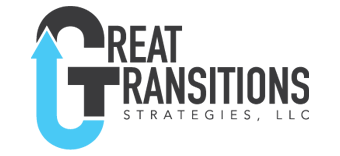“A close friend of mine just forwarded me a job posting that fits my skill set perfectly. The problem; I have not been actively seeking a change. My resume is not up to date, I have not been networking, and the deadline submission is in two days with interviews in a week. What do I do first?”
An application process on a short timeline can be overwhelming. To reduce the stress, focus on the priorities. Here is my view of your priorities.
Priority One: Submit an Outstanding Application
The complexity of the application depends on the type of organization and level of the position. The most complex will require an application, cover letter, resume, letters of recommendations, and/or references.
First task, list all the requirements and identify the long lead items such as letters of reference.
Second, analyze the job description and break it apart. Determine how your skills and experiences make you a fit and write them down.
Next, using the above, update your resume tailored for this position. Have someone with credibility review your resume. Consider a review by a professional. An investment of a couple of hundred dollars could be worth thousands in salary and incalculable benefits in emotional wellbeing. A personal recommendation is Scott Vedder. He has assisted dozens of my clients with excellent results.
With the resume complete, the cover letter and other requirements should flow more easily. Why? Because you have completed the challenging thinking of mapping your skills to fit the position.
As you complete the package, update your LinkedIn Profile. Again, the thinking you did on your resume will pay dividends. Ensure your profile is complete prior to hitting “submit” on your application. Undoubtably your package will be compared to your LinkedIn Profile.
What about networking during this phase? The priority is to submit an outstanding application package in a short timeframe. Therefore, any networking should directly support this priority. Network with individuals that can provide insights or beneficial connections. If you have a connection who can help move your package inside the organization, provide insights to the culture of the organization, or specifics of the position, meet with them.
Priority Two: Interview Prep
Package submitted, a sigh of relief. The purpose of your application – get you to the interview phase.
The good work you did in the application phase has laid the foundation for your interview preparation. In this phase you will refine the information and solidify how to communicate it in person.
Add to your initial analysis of the position description an analysis of the mission, vision, and values; Fully understand them and determine how your previous experiences and accomplishments align. Write them down.
Based on your two analysis’ create five 3-minute stories that highlight how you are a fit for the position. I recommend the STAR format. S – Situation, T – Task, A- Action taken, R – Results. Make sure the stories are versatile and can cover elements of the position description, mission, vision, values, and behavioral questions. Behavioral questions are those that start with something like; “Tell me about a time when…” or “How do you…”
Next, practice your stories. At a minimum I recommend identifying a story by a title, identifying what portions of the position description it fits, and writing a couple of bullets for each letter of STAR. Then practice.
Other interview preparation. Google the top 10/25/50/100 interview questions and practice answering them. Put yourself in a realistic setting and have a colleague interview you. There are some interview preparation services available. Think about tapping the alumni services of where you graduated and other recruiting services. For veterans there are services that will provide assistance at no cost. One service that has received excellent reviews by my clients is Candorful. No cost for veterans and an investment of $450 for three practice interviews for non-veterans. Consider the return on investment for this type of service.
Priority Three: Networking
Networking becomes a top priority once you have a comfort level with priorities one and two.
Your networking should focus on “prototyping conversations”. When in a prototyping conversation, in your mind, place yourself into the position of the person you are talking with. Ask questions to help you understand what it would be like to hold that position, work in that organization, or in that industry. Prototype yourself into their role. Focus on the other person and you will be amazed at what you learn about how you may fit into a role.
Short timeline, no problem if you focus and address the requirements in priority order.
Hope this helps.






